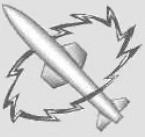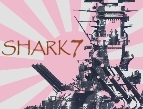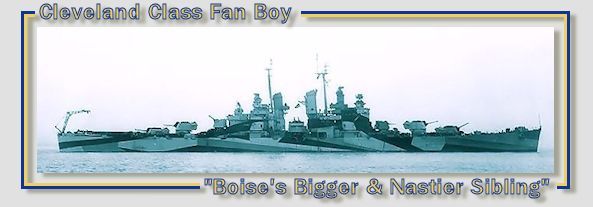John 3rd
Posts: 17178
Joined: 9/8/2005
From: La Salle, Colorado
Status: offline

|
kfsgo--Here is what Blackhorse put together at the front of this Thread. IT is pretty good and gives a starting point for China:
Well, OK. If the "kindler, gentler" Japanese simply must hold most of the Chinese economic centers at game-start, then how about this:
A BRIEF REVISIONIST HISTORY OF THE START OF THE "WAR OF RESISTANCE" AGAINST JAPAN
All through 1937 and 1938, Japan consolidates its hold in Manchuria, continues to support friendly warlords and collaborationists, and keeps political pressure on the KMT regime to advance Japan's China Autonomous Movement policy.
The first series of agreements banned the KMT from a political or military presence in the provinces ranged between Beijing and Manuchuria and Mongolia. Although the Japanese did not occupy these provinces, the political vacuum made it easy for them to establish friendly collaborationist regimes. In China, Chiang is willing to trade space for time, as his focus is on making the National Revolutionary Army a professional force, and his hope is to defeat the Communists before engaging Japan in open warfare.
However, in the aftermath of the Anti-Comintern Pact (Novemenber, 1936), the Japanese put increasing pressure on the German government to stop assisting the Chinese military reorganization. By early 1938, German equipment shipments had stopped, and its military advisors were withdrawn. By then, 20 divisions had been trained and equipped to German standards, and were led by officers from the Whampoa military academy who were (mostly) loyal to Chiang. As the Germans leave, Chiang turns to the Soviet Union for assistance. Stalin provides aid, despite Chiang's continued pogroms against the communists. Stalin's cold-blooded calculation is that Japan is less likely to attack the USSR if it is tied down in China, and he puts aside ideology to give material support to Chiang.
The KMT-Japanese agreements covering northern China are vague (what does a ban on 'political activity' mean?) and open for dispute. There are incidents, and guerillas organized against Japanese puppet administrators, but the Japanese do not seek to push into Beijing or beyond, and an uneasy truce prevails.
Late in 1938, the Japanese shift the focus of their political pressure to Southern China. Since a 1932 incident, China's military was barred from the Shanghai region. Throughout the 1930s Japan uses its economic and military presence to build a network of dependent local governments. In 1938, Tokyo seeks to extend its China Autonomous Movement to the Shanghai region, and force Chiang to make the same concessions there, as he had in the north. With much of his army engaged in a major campaign to crush the Communists in the north, Chiang agrees, although his policy of appeasing Japan is becoming increasingly unpopular throughout China.
The Japanese install Chiang's former KMT rival Wang Jingwei, as ruler of the Shanghai region. In early 1939, Wang declares his government to be the legitimate government of all of China. Wang is clearly backed by powerful Japanese industrial and military leaders in China, but his proclamation wrong-foots the Tokyo government, which does not immediately rein him in.
Both Wang and Chiang force Japan's hand. Chiang sees Wang as a direct threat to his control of China. Chiang makes a hasty truce with the Communists and sends the 19th Route Army, including two of his German-trained divisions, to confront Wang's collaborationist troops that are moving through Jiangsu province towards the Chinese capital at Nanking. At the Tai Hu incident of August 29th, 1939, the KMT's National Revolutionary Army crushes Wang's troops near Wusih, and follows them on the road to Shanghai. The road is blocked by Japanese marines, and open warfare between Japan and China soon ensues.
Chiang sends the bulk of his German-trained divisions to Shanghai. Initially unprepared for a full-out war, it takes the Japanese ninth months to break the siege of Shanghai; when they do, the flower of Chiang's National Revolutionary Army has been destroyed. The routed KMT troops fall back and try to rally at Nanking, but the city falls in September, 1940. The Japanese troops are less-disciplined than they might be; their 200,000 casualties since the war began include most of the best small-unit leaders. The troops are exhausted by the fighting, maddened by the vicious Chinese opposition, and exhilarated by the prospect that the fall of the Chinese capital will mean the end of the war. It is the perfect recipe for the "Rape of Nanking."
But Chiang does not surrender. He moves his seat of government inland, first to Wuhan, then, after repeated air and naval bombardments, to Chungking. He directs the transfer of Chinese industry to the Chungking area. China's resistance has thrilled and impressed the West. Even before the Germans invade Russia in 1941, Stalin has scaled down his support for Chiang. As the Russians step down, the Americans step up. While America remains isolationist, Roosevelt is concerned by the pace of the Japanese build-up, and interested in developing China as a friendly power. He supports the proposal for an "American Volunteer Group" in China. By November, 1941, the 1st and 2nd AVGs, equipped with early-model P-40 and A-20 aircraft originally destined for England, have arrived at air bases in China and their air crews are ready to enter the fight.
After the capture of Nanking, the Japanese government takes time to reconstitute and reinforce the army, and restore its discipline. The army refits and consolidates its hold throughout 1941. Elsewhere in China, the Japanese occupy the puppet territories of the north, and capture Beijing after a brief, brisk battle. The Navy is engaged with a blockade of China, and bringing troops to occupy Canton and the port cities. By November, 1941 Japan controls the entire coast except for Wenchow and Pakhoi, and the international enclaves at Hong Kong, Macao, and Kwangchowan. The main army, at Nanking, is refit, and preparing for a campaign against Wuhan.
----------------
This scenario gives Japan at-start control of:
All the Chinese coastal cities (+ Canton) that they normally have
The cities along the line Shanghai-Nanking, plus all adjacent cities
The northern cities along the line Tienstin-Peiping-Kalgow-Tatung-Kweisu-Paotow and everything to the (map) east
China gains control of:
The Wuhan area (Hanchow + Wuchang) and the surrounding inland cities (Ichang, Anking, Nanchang)
The northern inland area bounded by Sinyang, Suchow and Chengting
China's military strength ends up about the same as is stock AE. The better-trained army fights longer and harder, but is eventually chewed up as badly as IRL.
China should have more industry in Wuhan and Chungking -- in this scenario Chiang has a lot more time to evacuate factories inland.
. . . and China gets both AVG groups (P-40Bs, and A-20As) deployed in China at start. China should also get earlier reinforcements for its own air force.
_____________________________
|
 Printable Version
Printable Version

 There are two detachments already in the game. Don't remember which squadron is broken up but just take 2 more from that one and that should be good.
There are two detachments already in the game. Don't remember which squadron is broken up but just take 2 more from that one and that should be good. 














 New Messages
New Messages No New Messages
No New Messages Hot Topic w/ New Messages
Hot Topic w/ New Messages Hot Topic w/o New Messages
Hot Topic w/o New Messages Locked w/ New Messages
Locked w/ New Messages Locked w/o New Messages
Locked w/o New Messages Post New Thread
Post New Thread